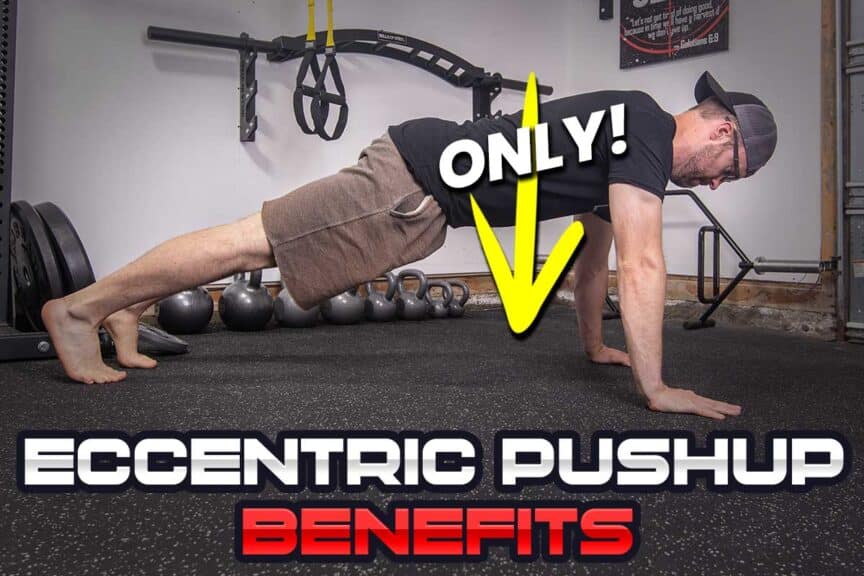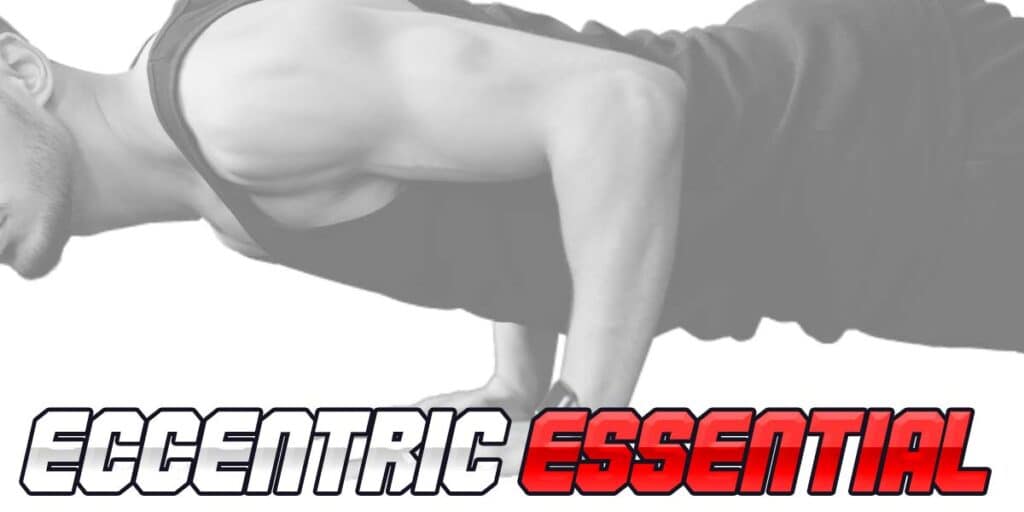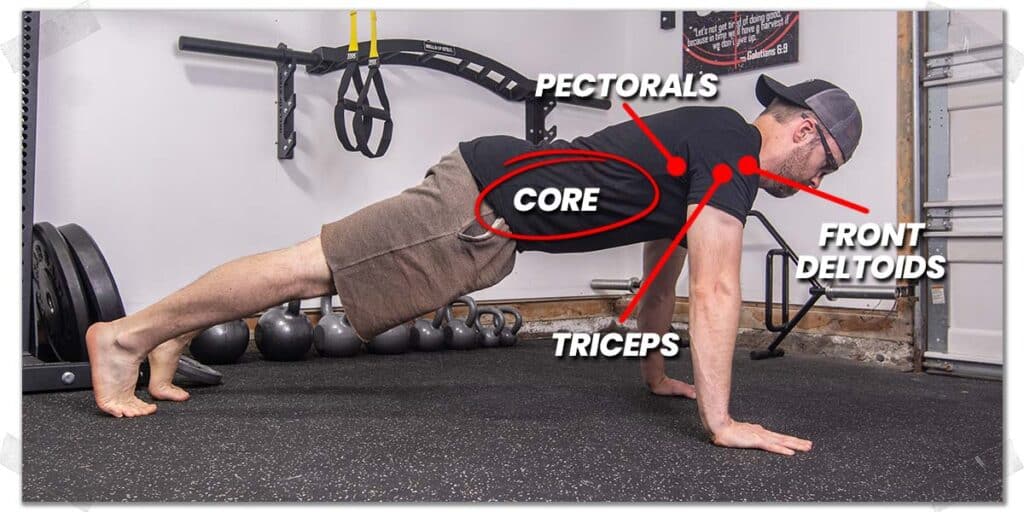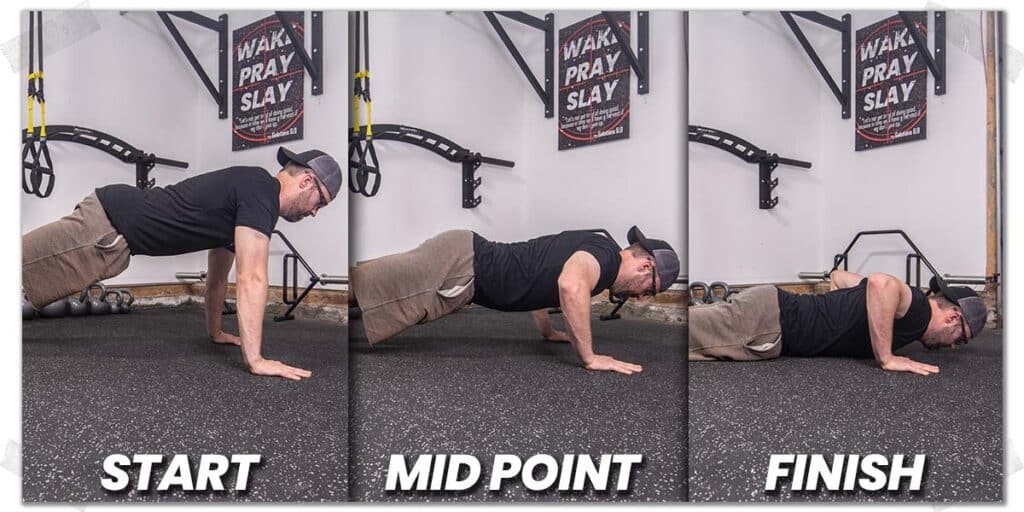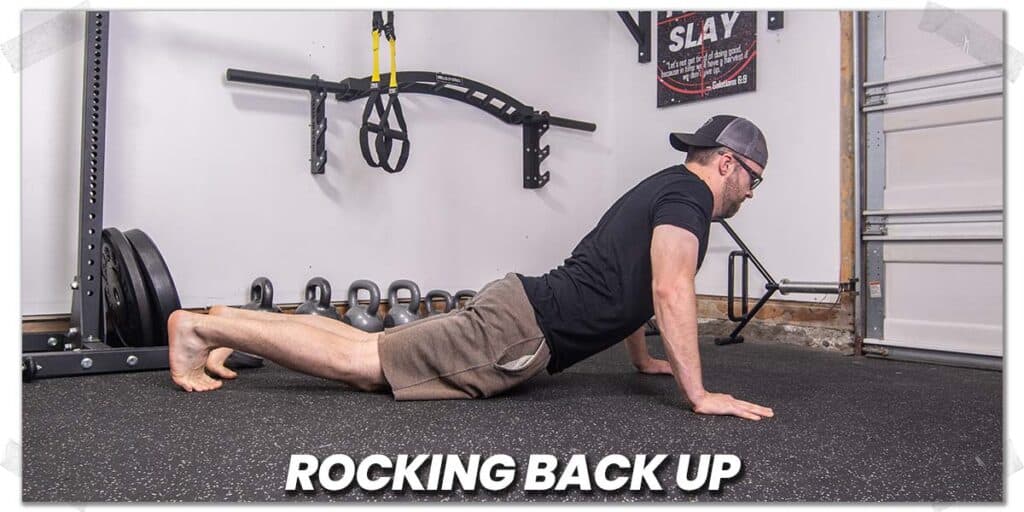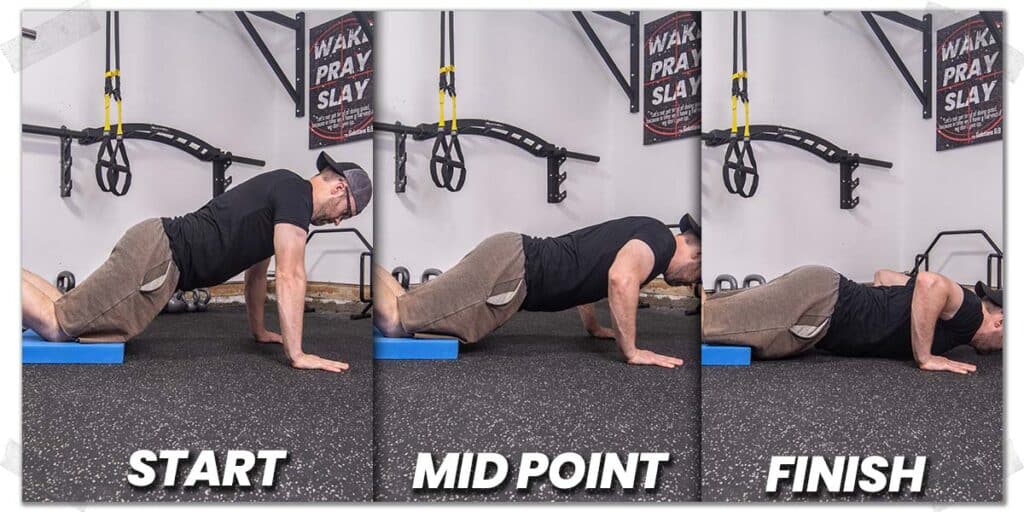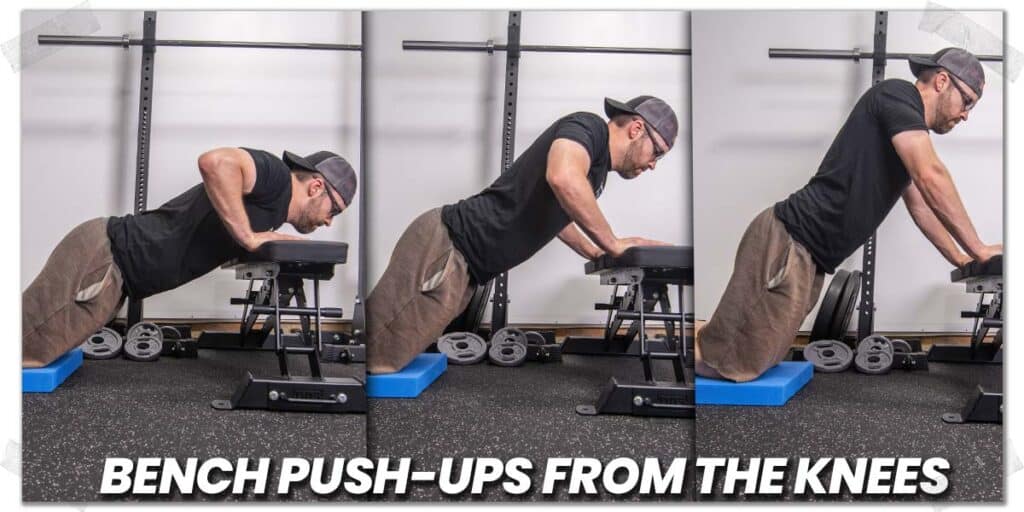Push-ups are an age-old, tried-and-true upper body exercise that offers profound benefits. Unfortunately, not everyone has the upper body strength to perform traditional push-ups.
If you fall into this category but want to make substantial improvements to your upper body strength, including your chest, shoulders, and triceps muscles, don’t fret; this article will open your eyes and reveal the surprising benefits of performing eccentric push-ups.
So, if you aren’t strong enough (yet) to do regular push-ups, read onwards — you’re about to learn why the eccentric push-up is essential to perform on your path towards building a stronger upper body (and one that becomes capable of performing regular push-ups).
A small request: If you find this article to be helpful, or you appreciate any of the content on my site, please consider sharing it on social media and with your friends to help spread the word—it’s truly appreciated!
Related article: Why the Sphinx Push-up Reigns KING for Tirceps Strenght and Size
Description: What is an eccentric push-up?
In short, an eccentric push-up refers to only performing the downward portion of the exercise when the body is lowered toward the ground (it’s often called a negative push-up). The upwards portion is not performed — all energy and effort is spent only on the movement’s downward phase.
Let’s break it down a bit more since doing so will likely help you better understand how and why eccentric push-ups are so profoundly helpful for increasing upper body strength.
As with any other standard bodyweight exercise, a traditional push-up consists of two phases of muscle contraction:
- The concentric phase
- The eccentric phase
In the case of the push-up, the concentric phase refers to the upward pushing motion when you’re pushing your body off the floor.
The eccentric phase refers to the downward movement when you’re lowering your body back toward the floor.
Here’s the secret sauce with eccentric push-ups: not everyone has the upper body strength to perform the concentric (upward pushing phase), but nearly everyone has the ability to perform the eccentric phase (barring physical injury or pain).
What’s even better is that eccentric training (i.e., performing exercises that solely focus on, or notably emphasize, training the eccentric phase of a movement) has been shown to produce significant strength gains.
Want a FREE beginner’s program to bodyweight training? Click this link to read up on a three-month bodyweight training I’ve put together for getting stronger and healthier without any equipment! (Yes, it’s completely free!)
Benefits: why perform eccentric push-ups?
Building upper-body strength leads to various health and wellness benefits, along with an overall quality of life.
A strong upper body will help to:
- Reduce or eliminate aches and pains that can arise from a lack of strength.
- Prevent injuries and help injury rehabilitation for athletes
- Make activities of daily living (ADLs) much easier to complete.
- Improve common postural dysfunctions seen in the general population.
Yes, numerous upper-body exercises can strengthen your upper body, but eccentric exercises have a few shining points worth mentioning:
- Eccentric push-ups require no special equipment to perform.
- They are not a complicated movement requiring experience, a spotter, or a personal trainer.
- They can be done in a small room or area — no need for a big gym!
- They can be easily modified to make the exercise easier or more challenging based on the needs of the individual.
Ultimately, this means that nearly any individual who is otherwise healthy — regardless of their fitness abilities and workout experience — can incorporate this exercise into their weekly fitness pursuits and subsequently receive notable strength and health benefits.
How to: performing the eccentric push-up
The beauty of eccentric push-ups is that they are as simple to perform as they are effective in enhancing your muscular strength.
Here’s how to do the perfect eccentric push-up:
- Assume the standard push-up position with your elbows straight. You can either do this from the full-body position so that your toes are on the ground or from the modified version (which is easier) by having your knees on the ground.
- From this starting position, slowly lower your chest to the floor without letting your hips sag downwards; your chest and the front of your hips should contact the ground at the same time.
- Once your chest and hips are on the ground, rock yourself back up (i.e., don’t push yourself back up) to the starting position. Rocking yourself up should take a very low amount of effort to do so.
- Repeat the above sequence for as many repetitions as desired.
Now, there’s one more critical component to doing the perfect eccentric push-up, which makes the entire exercise incredibly effective for becoming stronger:
Lower yourself down to the floor very slowly with every repetition you perform.
Here’s why: the faster you let yourself fall closer to the floor, the more you let gravity do the work rather than your muscles.
Related article: Overwhelmed with Fitness Information? Start with THESE Tips
Most often, I will have my athletes and patients perform a five-second eccentric, meaning it takes them five seconds to move from the starting position to the finished position.
Pro tip: if performing eccentric push-ups from your knees is too challenging, you can try performing the traditional push-up with your hands on the end of a chair or bench. This modified push-up will significantly reduce the amount of chest, arm, and shoulder strength required to complete the movement.
Parameters: Training details for the eccentric push-up
Knowing how to properly perform eccentric push-ups is certainly necessary, but it’s only half the battle — you now need to know how to effectively incorporate them into your training regimen. Otherwise, what’s the point, right?
So, let’s quickly break this down.
Sets and reps: How many should you perform?
The ideal number of sets and repetitions will depend on numerous factors, with the most critical factors being:
- How conditioned or deconditioned your body currently is.
- How fast or slow you perform your eccentric push-ups (slower means fewer reps performed).
- What the rest of your individual workout and overall workout routine looks like.
I can’t go into the details regarding each of these factors, so you’ll have to figure this out for yourself.
That being said, I often advocate for the following:
- 2 sets of 5 repetitions (either from toes or knees) for beginners or those who are rather deconditioned.
- 3 sets of 8 for those who have a decent baseline of fitness.
- 3-4 sets of 8-10 for those who are conditioned and can perform 20 or more traditional push-ups without taking a break.
Additionally, I advocate that eccentric push-ups be done with a five-second tempo for every repetition (i.e., it should take five seconds to lower yourself down to the ground).
Frequency: How often should you perform eccentric pushups?
As with finding an ideal number of sets and repetitions to meet your needs, the same can be said for how frequently throughout the week you may want to perform them.
Thankfully, this is a bit more straightforward than dialling in optimal sets and reps.
If you are a beginner without a baseline of physical fitness yet built up, try twice a week on non-consecutive days for the first week or two, then try three times per week on non-consecutive days.
For anyone else who isn’t a beginner, three times per week should suffice, assuming you’re performing these eccentric push-ups as part of a regular strength training or callisthenics (bodyweight) training program.
Final thoughts
The eccentric push-up is the perfect bodyweight exercise for improving upper-body strength, especially for beginners and those who lack the strength required to perform the traditional push-up. It’s also ideal since it requires no equipment.
And since it is a very simple movement to perform and can be modified to make it easier or more challenging, it’s a go-to for anyone looking to strengthen their chest, triceps, and shoulder muscles.
Frequently asked questions
There are a lot of push-up questions floating around out there on the internet. Below, you’ll find a few brief answers to some of those particular questions.
I like to include this little frequently asked questions section at the end of each blog article to be as helpful as possible!

Hi! I’m Jim Wittstrom, PT, DPT, CSCS, Pn1.
I am a physical therapist who is passionate about all things pertaining to strength & conditioning, human movement, injury prevention and rehabilitation. I created StrengthResurgence.com in order to help others become stronger and healthier. I also love helping aspiring students and therapists fulfill their dreams of becoming successful in school and within their clinical PT practice. Thanks for checking out my site!

